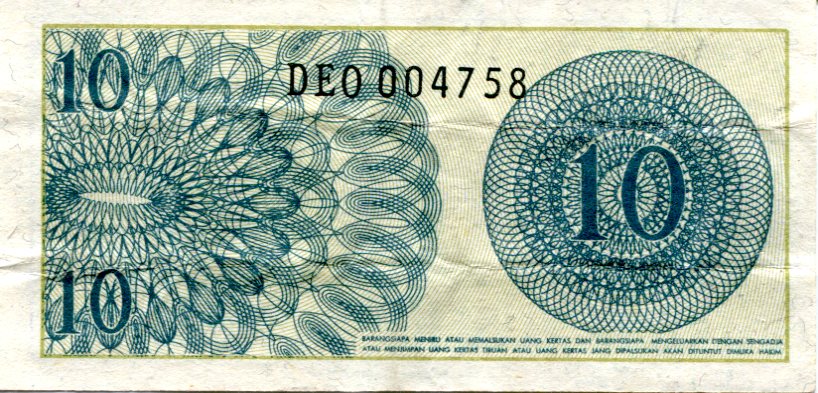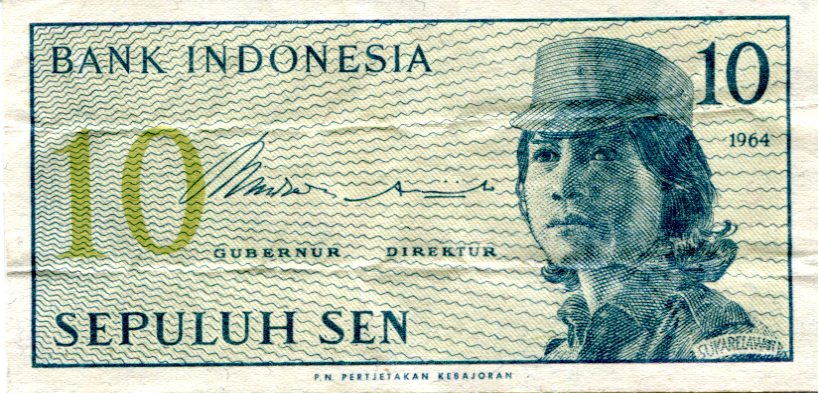Something I thought about the other day, when looking for more detail about my Indonesian 10 sen note, dated 1964: Why aren’t there prizes in cereal boxes any more?
This article at a site called Extra Crispy offers a plausible answer: kids wouldn’t respond to them any more. Entertainment for children has become more sophisticated, you might say. A more cynical take would be that if it isn’t an electronic three-ring circus, kids will be bored.
I wondered that because I read an entry posted by “Man” at a blog called Coined for Money that discusses the 10 sen note. Man asserts (all sic): “Taking a quick break from U.S. notes to talk about my oldest foreign note. I got this from a Cheerios box back in the 1980s when they had a special in box promotion.Cheerios has been doing this for year in the 1950s they had replica confederate money and the most famous is the Sacagewea coins from the 2000s.”
Interesting. I’ve confirmed that General Mills did give away Confederate money reproductions in Cheerios boxes in 1954 — one of those details that shows that some things do change — and Lincoln cents and a few hundred Sacagaweas in 2000.
But I didn’t acquire my note in the 1980s. I don’t remember when I got it, but it was at least as long ago as 1970. It’s one of the first, maybe the first, of the foreign banknotes in my possession. I found it fascinating as a kid. I still find it interesting: a relic, however minor, of Year of Living Dangerously Indonesia. (Book and movie both recommended.)
Could be that Cheerios boxes offered cheap foreign notes as premiums in the late 1960s. That’s plausible, since even then, 10 sen notes were worthless.
 To cite Wiki on the 1960s Indonesian rupiah (which even now is technically divided into 100 sen): “The hyperinflation of the early 1960s resulted in the pronouncement of the ‘new rupiah’ supposedly worth 1,000 of the old rupiah.
To cite Wiki on the 1960s Indonesian rupiah (which even now is technically divided into 100 sen): “The hyperinflation of the early 1960s resulted in the pronouncement of the ‘new rupiah’ supposedly worth 1,000 of the old rupiah.
“The withdrawal of the old money meant the issue of an entirely new set of banknotes, by Presidential decree of 13 December 1965. The decree authorised Bank Indonesia to issue fractional notes for the first time (although the 1 and 2½ rupiah notes were still issued by the government itself), in denominations of 1, 5, 10, 25, and 50 sen showing ‘Volunteers’, dated 1964.
“Due to the fact that the rupiah was only devalued about 10, rather than 1000 times, they were worthless on issue, and many millions of notes never entered circulation.”
Perhaps someone at General Mills’ ad agency got wind of the fact that countless thousands of 10 sen notes could be had for very little real money, and included them in the promotion. And for all I know, the company had so many that it could do it again in the ’80s.
